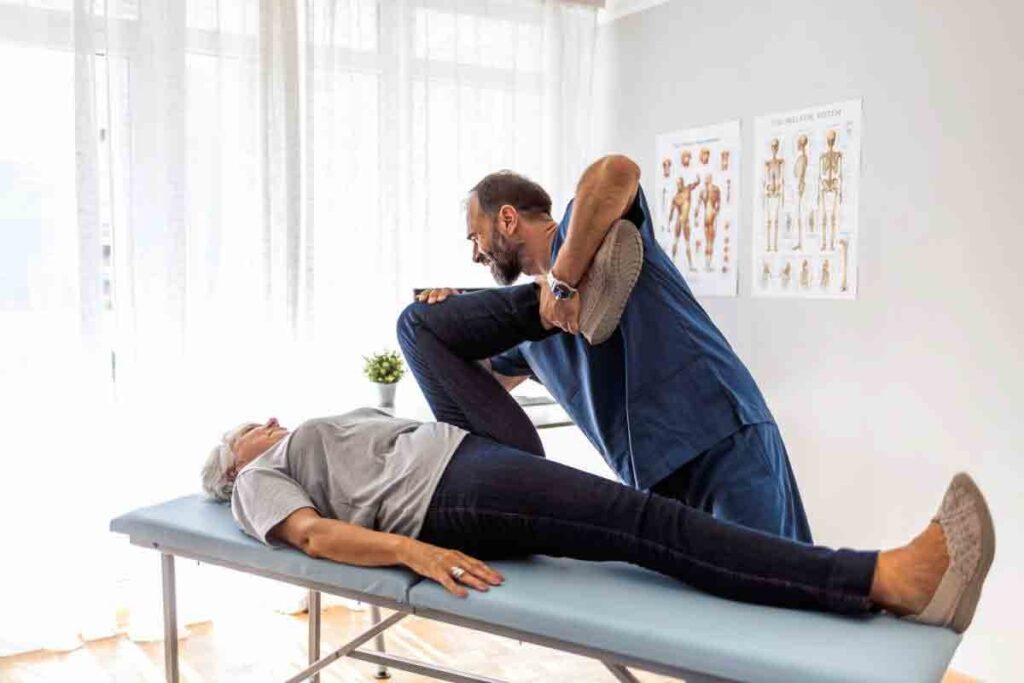
Recovering from abdominal surgery needs careful attention to your body’s healing. Gentle exercises help regain core strength, improve mobility, and aid in recovery.Find 7 essential, safe stomach exercises after abdominal surgery. Rebuild your core and promote healing with this step-by-step guide.
At Liv Hospital, we focus on patient-centered care and evidence-based guidance. This ensures a safe and effective recovery. Always get clearance from your surgeon before starting any exercise routine.
With the green light, the right stomach exercises can firm up and strengthen your abdominal muscles. This leads to better overall outcomes.

Recovering from abdominal surgery is more than just healing. It’s about getting your core strength back. The abdominal muscles are key for posture, movement, and protecting organs. Knowing how surgery affects these muscles is vital for a good recovery.
Abdominal surgery can weaken your core muscles. This happens because the surgery changes the muscle structure. The bigger the incision, the more muscle weakness you might face.
Rehabilitation is essential to regain core strength. Gentle exercises, when okayed by a doctor, help with circulation and muscle function.
Rehab after surgery is not just about getting strong again. It’s also about healing right. Gentle exercises after surgery help with circulation and prevent problems. About 80% of people with Crohn’s disease need surgery, showing how important rehab is.
Studies show exercising after surgery is good. It improves circulation, lowers complication risks, and speeds up recovery. Exercise is key for better health, and it helps avoid future health issues.
| Benefits of Post-Surgical Exercise | Description |
| Improved Circulation | Enhances blood flow, promoting healing and reducing the risk of blood clots. |
| Reduced Complications | Minimizes the risk of post-surgical complications such as adhesions and hernias. |
| Enhanced Recovery | Facilitates a faster return to normal activities and improves overall physical function. |

Knowing when to start stomach exercises after surgery is key for a safe recovery. The recovery has three phases, each with its own exercise rules.
In the first two weeks, focus on gentle movements. Deep breathing exercises and short walks are good. They help prevent blood clots and improve blood flow.
In the next phase, you can start more exercises. Try gentle pelvic tilts and heel slides. Always stop if you feel pain or discomfort.
After six weeks, you can do more core strengthening exercises. Make sure your doctor says it’s okay. This phase helps you get stronger and more stable.
Here’s a table to help you understand the exercise progression:
| Recovery Phase | Recommended Exercises | Precautions |
| Immediate (1-2 Weeks) | Deep breathing, short walks | Avoid strenuous activities |
| Early (2-6 Weeks) | Pelvic tilts, heel slides | Stop if pain occurs |
| Advanced (6+ Weeks) | Core strengthening exercises | Get medical clearance first |
Always listen to your healthcare team and your body. This way, you can safely get back to your usual activities.
Before you start exercising after abdominal surgery, follow some important guidelines. Always get your surgeon’s okay before starting a new workout routine. Guidelines for post-operative core strengthening vary and are often tailored to each patient.
Getting medical clearance is a must before exercising after hernia or other abdominal surgeries. Your doctor or surgeon will check your health and the surgery site. This is key to avoid complications and ensure your body is ready for exercise.
A medical expert advises, “Don’t rush back to activity too soon.”
“Jumping into exercise without clearance can cause setbacks, like wound reopening or internal issues.”
Know the warning signs to stop exercising right away. These include:
If you notice any of these signs, stop exercising and talk to your healthcare provider right away.
The type of surgery you had affects the exercises you can do. For example, exercises after hernia surgery might be different from those after a hysterectomy or bariatric surgery. It’s important to work with a healthcare professional or physical therapist to create a personalized exercise plan.
By following these safety tips, you can reduce risks and have a safe, effective exercise routine after abdominal surgery.
After abdominal surgery, setting up a safe and effective exercise space is key. A well-organized area helps you do exercises right and feel comfortable. This makes your recovery easier.
To make a safe space, remove any clutter or things that could trip you up. The floor should be smooth and well-lit. Also, keep a phone handy in case of emergencies.
Using the right props and tools can help a lot after surgery. Some good ones include:
These tools can adjust exercises to fit your comfort and ability. This helps your recovery go smoothly.
Comfort is very important during recovery. Make sure the room is at a good temperature and your clothes are loose. Having water and other essentials nearby also helps avoid extra strain.
| Comfort Consideration | Benefit |
| Comfortable Temperature | Reduces stress and promotes relaxation |
| Loose Clothing | Allows for a full range of motion without restriction |
| Accessibility to Essentials | Minimizes strain and effort during exercises |
By paying attention to these details, you can make a great space for your exercises after surgery. This will help improve your recovery.
Recovering from abdominal surgery takes time and the right exercises. These exercises help your body heal, build core strength, and feel better. It’s important to follow a safe and guided recovery plan.
Deep breathing is key in the early recovery stages. It reduces stress and helps you relax. Here’s how to do it:
Gentle pelvic tilts are good for early recovery. They loosen the lower back and pelvic muscles.
Heel slides and leg raises strengthen the abs without straining the surgery site.
Modified bridges strengthen the core and improve posture.
These exercises are vital for recovery after abdominal surgery. Start slow and progress comfortably.
| Exercise | Benefits | Precautions |
| Deep Breathing | Reduces stress, promotes relaxation | Avoid if experiencing respiratory issues |
| Pelvic Tilts | Loosens lower back and pelvic muscles | Perform gently to avoid strain |
| Heel Slides/Leg Raises | Strengthens abdominal muscles | Start with slow movements, avoid pain |
| Modified Bridges | Strengthens core, improves posture | Avoid if experiencing back pain |
Adding these exercises to your routine can help your healing and build core strength. Always check with your healthcare provider before starting any new exercise after surgery.
Creating a progressive exercise schedule is key after abdominal surgery. It ensures a smooth and effective recovery. This schedule gradually increases exercise intensity and complexity, improving the rehabilitation process.
In the first two weeks after surgery, focus on gentle movements. These movements help with healing and reduce discomfort. Recommended exercises include deep breathing and diaphragmatic activation.
These exercises boost lung capacity and lower the risk of complications. Start workouts at the same time each day to establish a routine. Begin with short sessions and gradually increase duration as your body allows.
As healing progresses, introduce exercises to strengthen the core muscles. Gentle pelvic tilts and heel slides are good choices. These exercises are vital for building core strength, stability, and mobility.
Always listen to your body and don’t push too hard. Increase exercise intensity slowly. If you feel pain or discomfort, stop immediately.
By week five, your body has made significant progress. Introduce exercises like modified bridges and leg raises to strengthen the core and improve flexibility.
Keep progressing at a comfortable pace. Make sure exercises are challenging but manageable. Adding variety to your routine keeps it interesting and prevents plateaus.
After eight weeks, you can start returning to normal activities and more strenuous exercises. Always monitor your body’s response and adjust your routine as needed.
Consult healthcare professionals for personalized advice on advancing your exercise routine. They can help you safely return to intense activities and sports.
Different abdominal surgeries need special care in post-surgery exercises. The recovery and exercise plan vary a lot based on the surgery type.
After hernia surgery, like umbilical hernia surgery or abdominal hernia surgery, be careful. Start with low-impact moves that don’t stress the belly. Gentle pelvic tilts and leg raises are good early on.
As you get better, you can do more intense exercises to strengthen your core. Always listen to your doctor or physical therapist to stay safe.
After a hysterectomy, avoid heavy lifting and bending. Start with deep breathing exercises and gentle stretching. As you get stronger, you can do more challenging activities.
After an appendectomy, start moving slowly. Begin with short walks and simple leg exercises. This helps prevent serious issues like deep vein thrombosis.
Bariatric surgery patients need a special exercise plan. It should be gentle at first, then get more intense as health improves. This helps with weight loss and body changes.
In summary, knowing what each abdominal surgery needs is key for a good recovery. Work with your healthcare team to create a personalized exercise plan.
It’s important to watch how your body reacts to exercises after surgery. As you get better, pay attention to your body’s signs. Make changes to your workout plan as needed.
Watching your pain and comfort is a big part of tracking your progress. Some discomfort is okay, but sharp pain means stop right away. Keep a journal to note how you feel during and after workouts.
Change your routine if you’re not feeling right. If pain doesn’t go away, talk to your doctor. They can adjust your exercises to fit your healing.
Setting goals that you can reach is key to staying motivated. Break big goals into smaller steps to feel less overwhelmed. Celebrate every small win to keep your spirits high.
Knowing when to make your workouts harder is important. Only get tougher when you’re ready. Start with easier exercises and warm up before each workout.
Physical therapists can make a big difference in your recovery. They can tailor your exercises to fit you. They help you stay safe and address any surgery issues.
By keeping an eye on your progress and tweaking your routine, you’ll recover well from surgery. Remember, being patient and persistent will help you reach your goals.
Getting your abdominal muscles strong and flexible after surgery is key for your health. Doing stomach exercises after surgery can boost your core strength. It also lowers the chance of complications and speeds up recovery.
For those who had hernia surgery, doing abdominal exercises is very helpful. These exercises make the abdominal wall stronger. This can help prevent future hernias.
It’s important to make exercise a regular part of your life after surgery. Adding these exercises to a fitness plan can improve your health. Always talk to a doctor before starting any new exercise to make sure it’s safe and right for you.
Sticking to a good exercise plan and living a healthy lifestyle can greatly improve your well-being. It also helps reduce the risk of problems after surgery.
Always get your doctor’s okay before starting to exercise after surgery. The time you can start varies based on your surgery and how you’re healing.
Exercising helps you regain strength in your core. It also improves your recovery, prevents problems, and boosts your health.
Start with gentle moves like deep breathing, pelvic tilts, and heel slides right after surgery.
Stop if you feel severe pain, get dizzy, or have trouble breathing. Listen to your body and adjust your workout as needed.
Yes, but choose exercises that fit your surgery type and get your doctor’s approval. Gentle exercises can aid in recovery and avoid complications.
Make sure your exercise space is safe and comfortable. Use props for support. This setup is key for a good workout.
Start with simple exercises and gradually add more challenging ones. This approach helps you build up your strength and endurance.
Keep an eye on how you feel and set achievable goals. Adjust your workout plan as needed to stay safe and effective.
Yes, a physical therapist can help tailor a workout plan that’s right for you. They ensure your recovery is safe and effective.
Yes, each surgery type, like hernia or hysterectomy, needs its own approach. Adapt your exercises to fit your specific needs.
Recovery time varies by surgery type and individual healing. Follow a gradual exercise plan and get your doctor’s okay before resuming normal activities.
You might do deep breathing, pelvic tilts, heel slides, leg raises, and modified bridges. Learn the right way to do these and adjust them to fit your needs.
Subscribe to our e-newsletter to stay informed about the latest innovations in the world of health and exclusive offers!
WhatsApp us